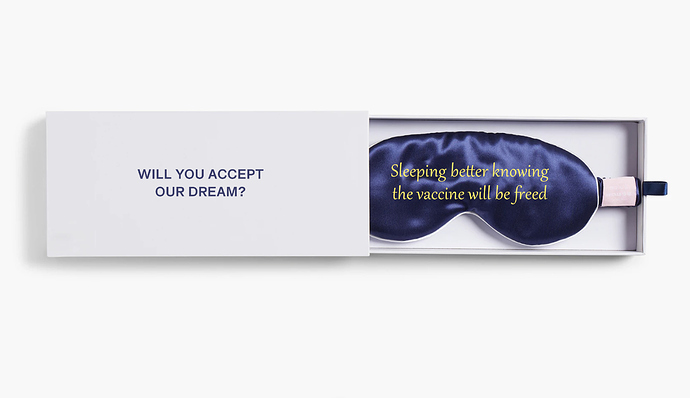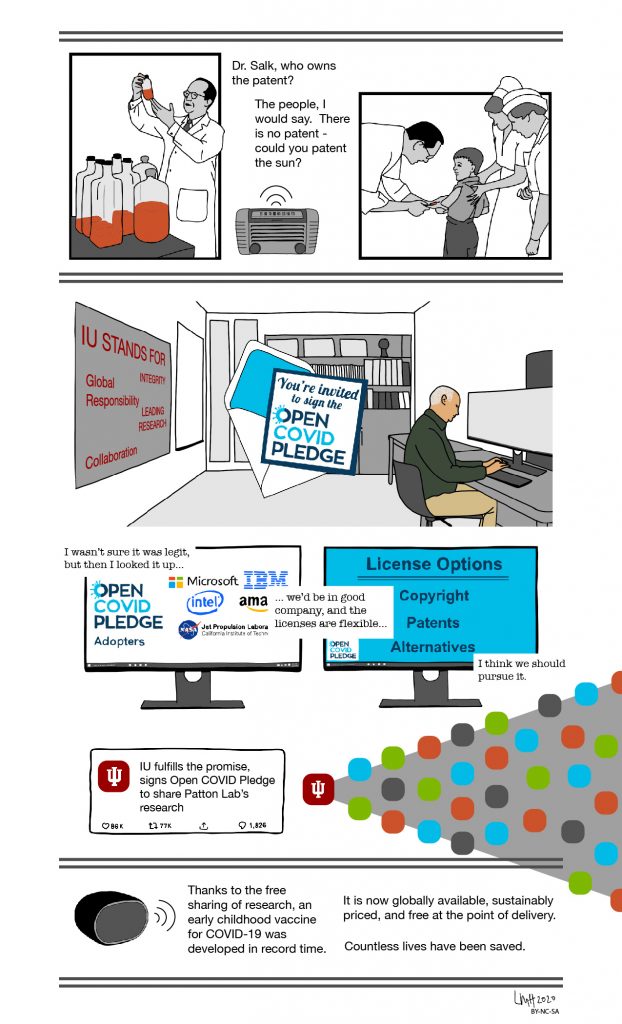This week, as we approach the halfway mark of our campaign (more on that next week), we asked our participants to reflect on where they’re at and where they’d like support. We gave participants a list of campaign moments—like making contact with a target, or responding to another squad’s mission report—so they could evaluate their progress and feel proud of their involvement! We also asked them to provide some feedback for the project management team regarding what strategic exercises they’d like to do more of, or where they need help. And we had longtime student advocates with UAEM join our weekly webinar to present on the challenges they faced in getting universities to adopt policies supporting access to medicines, and let our participants know how they won. Meanwhile, our squads continued work on their actions, pushing for change and learning from each other. Here are a few highlights from this week:
The Bisons Dreamed Big
The Bisons’ new action came to Lab member Esh Garg in a dream. The Lab plans to create and send “Free The Vaccine” themed, hand-embroidered sleep masks to researchers, who can then take selfies with the masks to post to social media and show their support. Their first target is a scientist at UCSD who has been active on Twitter, is working on COVID-19 research, and specializes in sleep medicine! As you can probably tell, the action is based in part on the strategy of the Plants for COVID Research Champions action. And that’s amazing: our participants are learning from each other, building on each other’s work while adding new creative twists personalized to their targets. And they’re definitely applying lessons learned about positive activism, with an action that shows gratitude to researchers and taps into the importance of self-care during the pandemic.

The Wolverines Switched Things Up
Members of Wolverine are currently in conversations with universities across Canada—six universities, in fact! This week, they decided to do a target swap, with each member reaching out to one of the Wolverine targets they hadn’t been in personal contact with before. Each member reached out via a video message, Twitter, or the Plants for COVID Research Champions action.
Wolverine members made significant progress at McGill, meeting virtually with researcher Mark Weber, who plans to talk to the university’s senior leadership about the Open COVID Pledge this week. Karen Mossman of McMaster also responded positively for a second time, although without an update on McMaster’s position regarding the Open COVID Pledge. Regardless, the Wolverines’ progress this week feels like a response to the Seals’ question last week of how to turn attention into action: strategic follow-up. The “target swap” action allows a relatively small number of activists to increase pressure on a target by contacting them individually, and communicates that many members of the public are interested in seeing change.
The Bisons Got Animated
We’d like to highlight one more Bison squad this week! This team recently created a comic to send to a researcher at Indiana University (IU) who is working on a pediatric vaccine. The idea is to turn the comic into a template as well, so it can be modified for other researchers. The team has also successfully connected with other targets at IU, including law professor Fran Quigley, and the director of the IU Center for Bioethics; both were enthusiastic about the work Free The Vaccine is doing and interested in working together. This progress is so exciting, and raises the possibility of building a coalition of faculty within the university that can help put pressure on the relevant decision-makers.

As the squad emphasizes, the comic is creative, but also straightforward, simply laying out the team’s argument in visual form. Bison member Laura Holzman reflects in the Mission Report:
I’m intrigued that, so far, it appears we’ve had the most success from the most straightforward actions… I’d want to do some careful thinking about when a creative intervention is particularly valuable (and what kinds of creative actions are effective… although I realize so much of this is specific to the particular person/situation).
Again, we’re learning that the point of “creative” activism is to get out of the habit of actions that are boring and easily ignored—but that doesn’t have to mean making things difficult for ourselves, or creating a spectacle for the purpose of spectacle. It’s about getting our message across, and convincing the right people to make a change.
